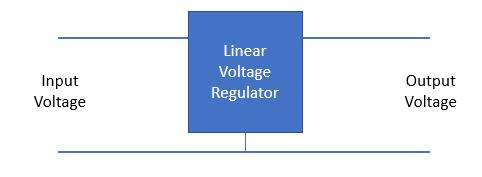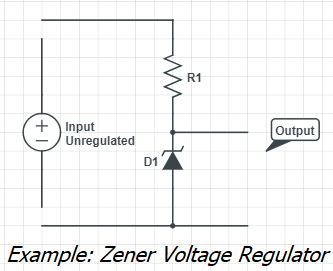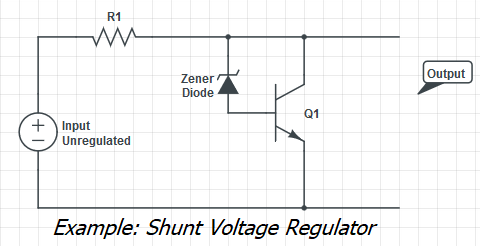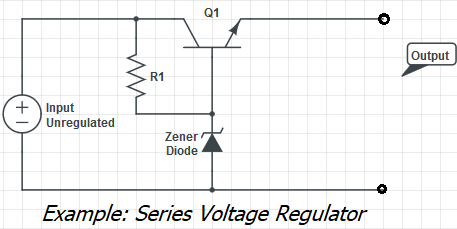An Introduction to Linear Voltage Regulators
23/04/2019, hardwarebee
Linear voltage regulators can be defined as simple electronic circuits that control the voltage drop and regulate it. They control the drop of voltage between the input and the output in a way to produce the needed output voltage. As such, they serve to maintain a steady stream of voltage and prevent any sudden or significant drops. The resultant output voltage is varied based on the internal resistance which changes to accommodate the changes in the incoming flow of input voltage. The difference in the voltages that come in through the input pin and leave through the output, if there is any, is dissipated as heat energy.

This article will be discussing linear voltage regulators as opposed to switched mode regulators. Switching or switch mode regulators, instead of using a DC/DC voltage converter system, uses a device that can switch on and off to maintain a constant, average value.
How do Linear Voltage Regulator Actually Work?
Linear voltage regulators are most frequently and commonly used in cases where there is a small difference between the input and the output voltage otherwise the device would overheat and get damaged. Hence, it is mostly only used for simplistic electronic circuits designed to execute simple functions over a small amount of heat dissipation.
These regulators basically put to use a closed feedback loop using which they can bias a pass element and maintain a constant, unwavering voltage across all the output points. Linear regulators tend to be step down converters in most cases, producing a smaller voltage output as compared to the input it receives. And as mentioned before, the voltage difference between the input and the output must be as small as possible for optimum functioning of the regulator. The power is dissipated in the form of heat energy in the pass transistor with the amount being equal to P = (Vin-Vout) x I load.
In order for a linear voltage regulator to work, there must be a minimum voltage difference between the input and the output, a value known as the dropout voltage. The regulator will not be able to regulate the output in the case that the conditions for the dropout voltage are not met beforehand.
Linear Regulator Terms
There are a number of different terms and specifications that you should have a basic know how about in order to efficiently make use of the regulator. Let’s take a look at some of them:
Dropout voltage:
The dropout voltage can be defined as the minimum difference required for optimum operation of the regulator between the input and the output. It varies from regulator to regulator but averages around 2V. Some regulators are, however, designed to specifically accommodate for low dropout voltage, often in the milliVolts they are called Low Drop Out Regulators (LDO).
Load and line regulation:
It is the sensitivity of the output voltage to changes in the load current and the input voltage respectively.
Bias current:
A bias current, also called the quiescent current, is the current that the regulator itself uses provided there is no load given.
Maximum output current:
As defined by the name, it is the maximum possible current the system can produce as an output and is often limited by overheating of the pass due to waste heat energy.
Output resistance:
This is the resistance that is experienced by the load voltage. If you want the regulator to be the closest to an ideal voltage source, it is advised to keep it as low as possible.
Varieties of Linear Voltage Regulators
As expected, there are many different types of linear voltage regulators out there that you can avail the use of, with some having fixed outputs to others that allow you to program the outputs using a resistor divider. Not to mention, you can also get low dropout regulators, also called LDOs, or even those that regulate negative voltages.
Typical Usage of Linear Regulators
- Linear voltage regulators are extremely simple to understand, build, and use, making them a very popular choice across the board and finding applications in a multitude of fields and aspects
- Apart from being very easy to comprehend and use, linear regulators are also incredibly cheap, making for a cost-efficient option that many prefer
- Their operations are very quick which allows them to respond to load voltage changes in the blink of an eye
- Unlike other voltage converting circuits such as DC to DC converters, a linear voltage regulator does not produce any switching noise, making them a superior option for RF circuitry
Examples of Linear Voltage Regulators
Example 1: Zener Voltage Regulator
Zener voltage regulator is shown in the following drawing. It consists of a Zener diode that limits the voltage and a resistor to limit the current. The regulated output voltage is the Zener voltage. Zener voltage regulator are suitable for lower power consumption applications.
Example 2: Shunt Voltage Regulator
In shunt voltage regulator, the regulated voltage is Vbe + Vz. The shunt voltage regulator works by providing a current flowing from the power supply to ground via a variable resistance.
Example 3: Series Voltage Regulator
A series voltage regulator consists of a variable element between the input and output. The voltage drops across the element and allows a regulated output voltage.
Linear Voltage Regulators Disadvantages
One of the only disadvantages that comes to mind when considering these regulators is that of inefficiency that can lead to the overheating of the device with use. Since the linear voltage regulators are always step-down systems and need to drop some voltage from the input value in order to regulate the output voltage, you will always have to worry about the release of the waste energy. So you will have to be careful with the heat dissipation and cooling of your regulator as it may heat up due to the voltage drop that occurs across the pass element.
Another disadvantage is the physical size of the regulator – in high power applications, the regulator can be using a significant space on your board – again due to the heat dissipation requirements.
This can be effectively done using the likes by replacing the linear regulator with a DC to DC converter if you need a system with higher power and efficiency characteristics. Most linear voltage regulators do, however, come equipped with features that allow them to shut down in the case that they do heat up and over beyond their capacity.














